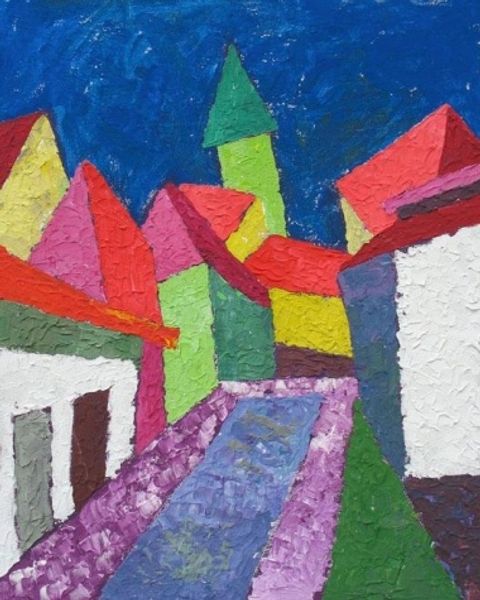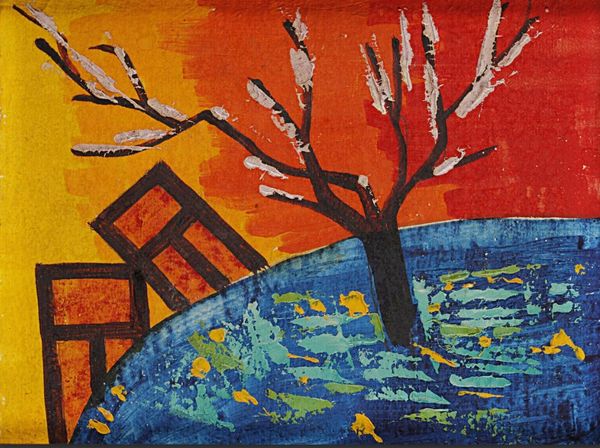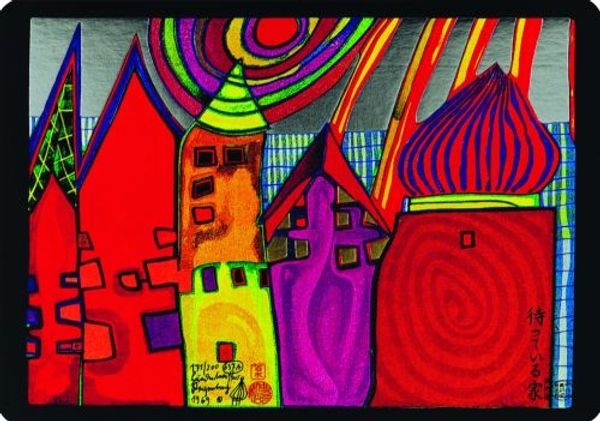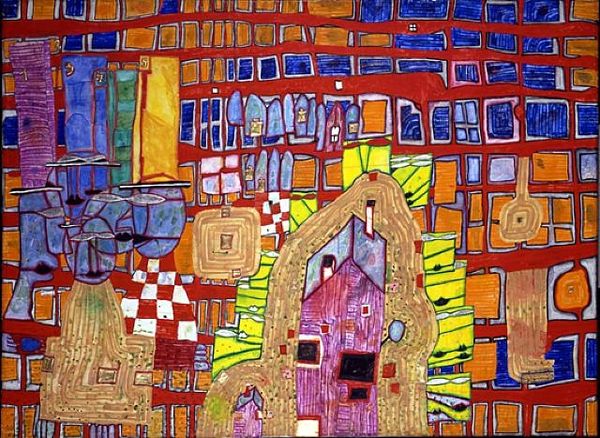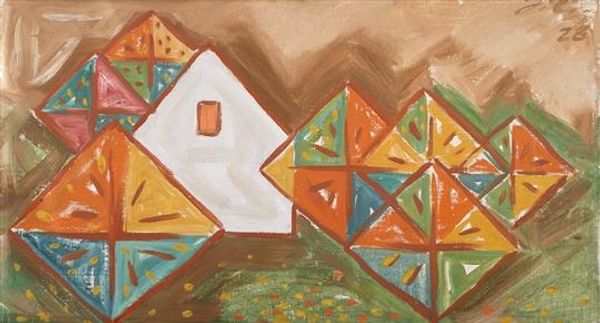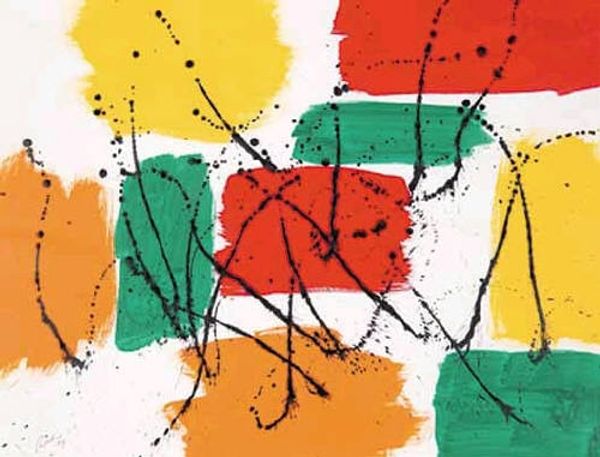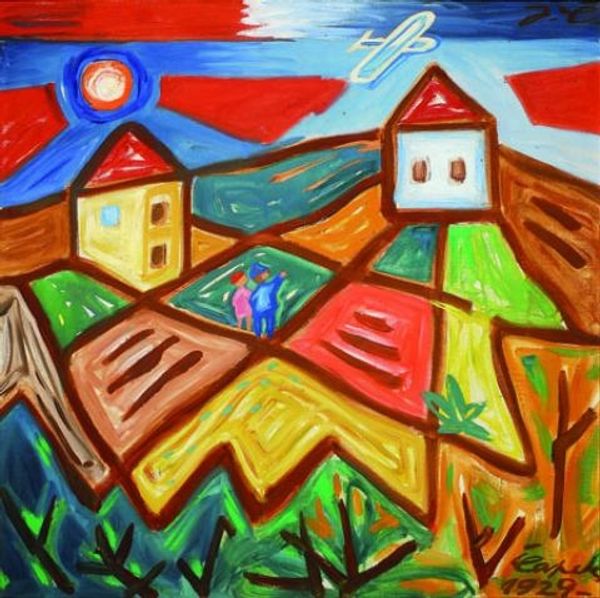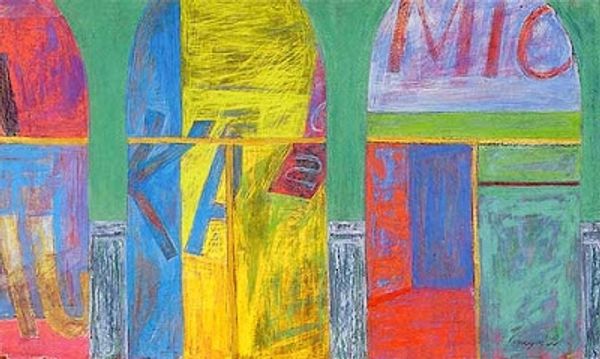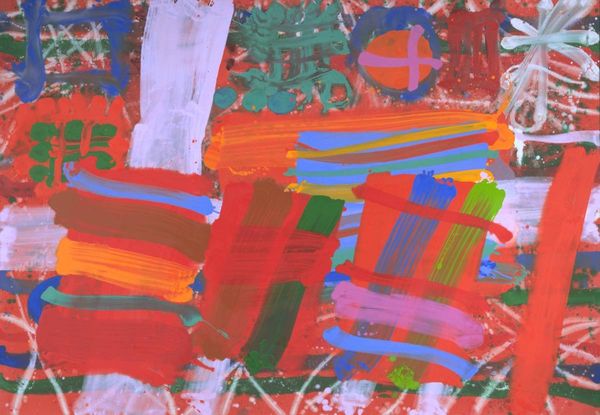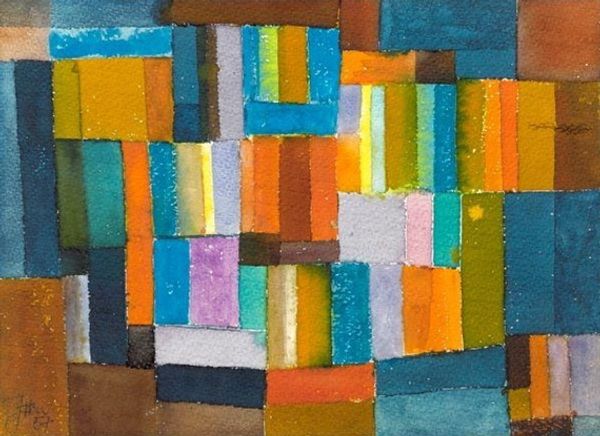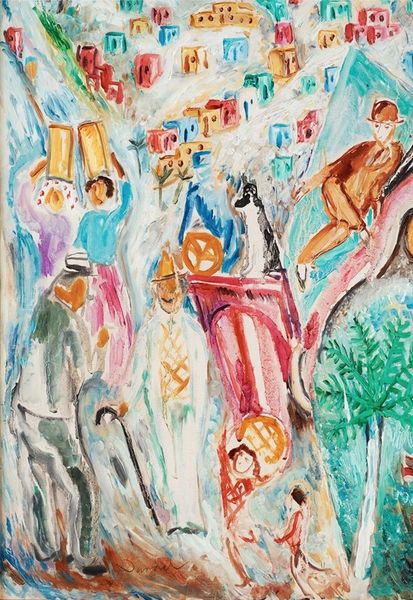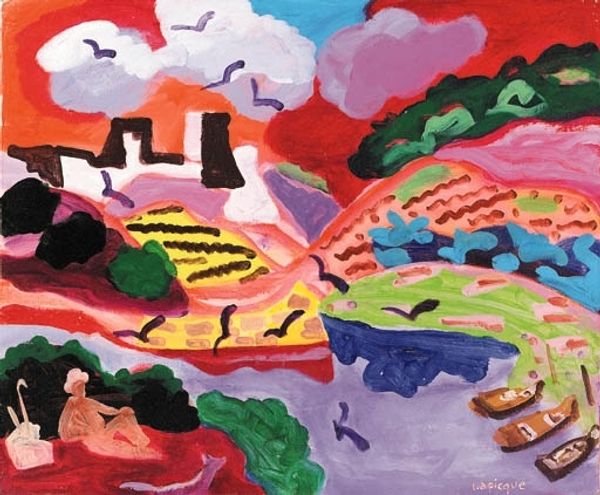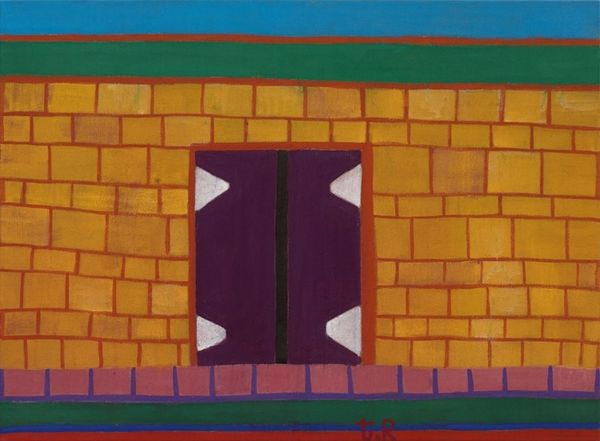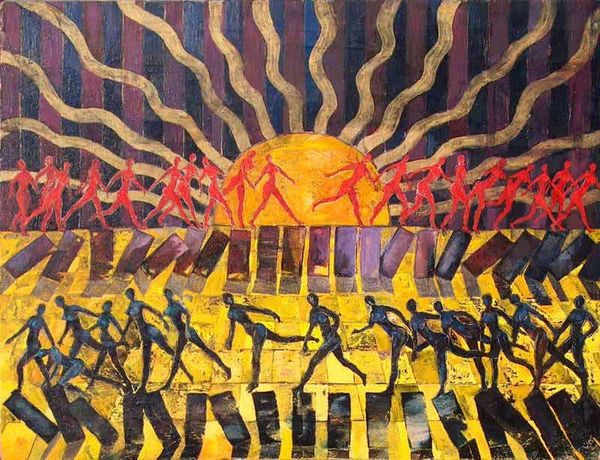
painting, acrylic-paint
#
abstract expressionism
#
painting
#
pop art
#
acrylic-paint
#
geometric pattern
#
geometric
#
geometric-abstraction
#
cityscape
#
abstract art
#
modernism
Copyright: Vudon Baklytsky,Fair Use
Editor: Looking at Vudon Baklytsky's "Kyiv Windows" from 1980, crafted with acrylic paint, I am struck by its almost childlike simplicity. The windows feel like bold, geometric blocks stacked against the darkness. What do you see in this piece, particularly regarding its materials and methods of production? Curator: From a materialist perspective, I'm immediately drawn to the deliberate, almost rudimentary, application of the acrylic paint. Consider how the thick impasto creates a textured ground, fighting against the flatness often associated with modernism. How does this treatment of the material, the "cheap" and readily available acrylic, democratize art making in Soviet Ukraine? The work shifts away from the preciousness of traditional oil painting. Editor: That's fascinating! I hadn’t considered the socio-political implications of the acrylic choice. The roughness kind of subverts the sleekness often found in modernist abstraction. Curator: Precisely. It suggests a certain urgency, a prioritizing of raw expression over technical finesse. Think about the limitations artists faced at the time, the potential restrictions on accessing 'high art' materials. Acrylic offered a means to circumvent those limitations, fostering creativity outside sanctioned channels. What do the shapes themselves suggest to you about construction? Editor: I guess they seem like they've been added on to the background, almost like separate modules put together. The windows, presented as modules, reference prefabricated architectural elements perhaps, alluding to mass-produced buildings characteristic of Soviet cityscapes. Curator: Exactly! We are looking at the material conditions reflected in abstraction. It reframes "cityscape" and "abstraction" through the lens of production, inviting contemplation about artistic agency. Has your view of the piece shifted at all? Editor: Definitely. Thinking about the materials and their context gives the painting a whole new depth. I appreciate seeing the painting as a kind of material declaration. Curator: Indeed. By grounding the artwork in its physical and social reality, we can gain a more nuanced appreciation for the artist’s choices and the complex interplay between art, labor, and the everyday.
Comments
No comments
Be the first to comment and join the conversation on the ultimate creative platform.
